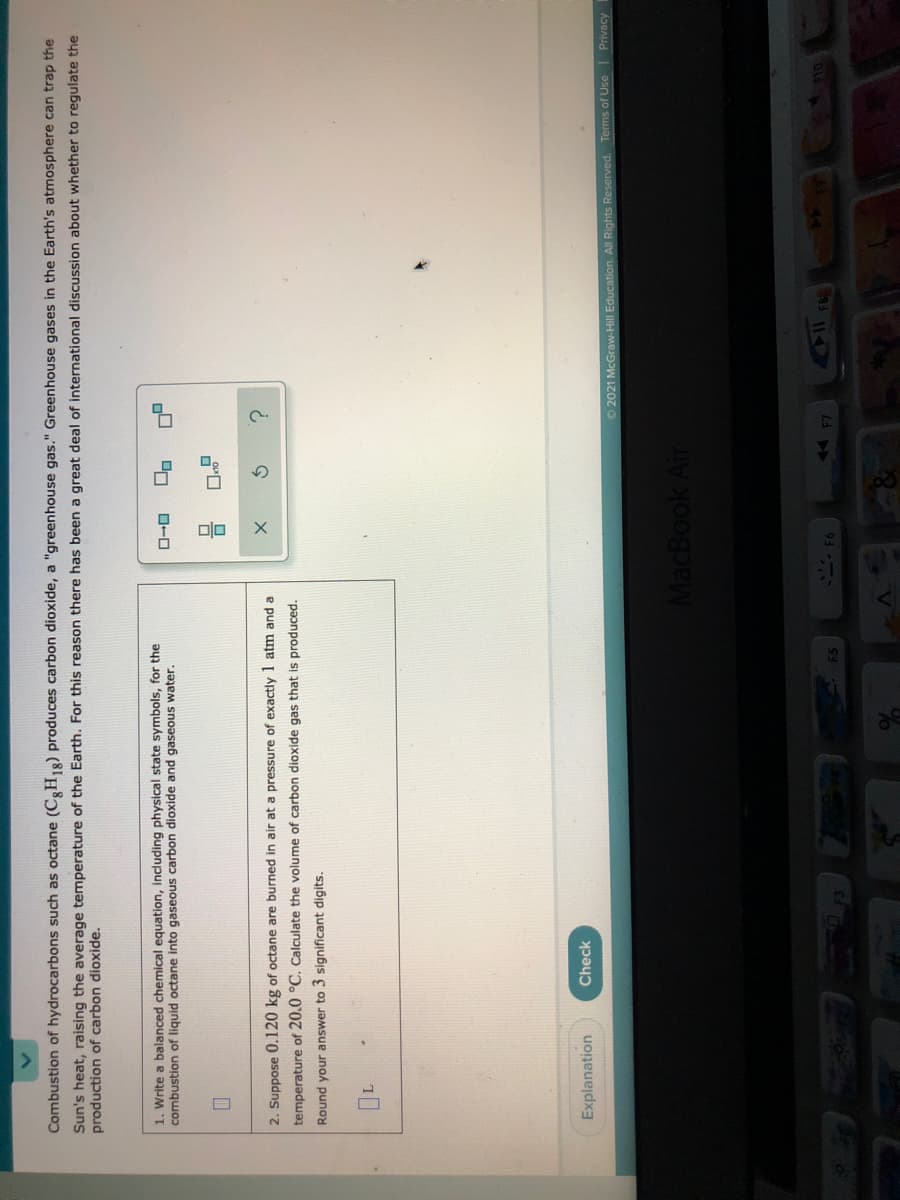Combustion of hydrocarbons such as octane (CH13) produces carbon dioxide, a "greenhouse gas." Greenhouse gases in the Earth's atmosphere can trap the Sun's heat, raising the average temperature of the Earth. For this reason there has been a great deal of international discussion about whether to regulate the production of carbon dioxide. 1. Write a balanced chemical equation, induding physical state symbols, for the combustion of liquid octane into gaseous carbon dioxide and gaseous water. 2. Suppose 0.120 kg of octane are burned in air at a pressure of exactly I atm and a temperature of 20.0 °C. Calculate the volume of carbon dioxide gas that is produced. Round your answer to 3 significant digits. Explanation Check O 2021 McGraw-Hill Education. All Rights Reserved. Tems of Use Privacy MacBook Air
States of Matter
The substance that constitutes everything in the universe is known as matter. Matter comprises atoms which in turn are composed of electrons, protons, and neutrons. Different atoms combine together to give rise to molecules that act as a foundation for all kinds of substances. There are five states of matter based on their energies of attraction, namely solid, liquid, gases, plasma, and BEC (Bose-Einstein condensates).
Chemical Reactions and Equations
When a chemical species is transformed into another chemical species it is said to have undergone a chemical reaction. It consists of breaking existing bonds and forming new bonds by changing the position of electrons. These reactions are best explained using a chemical equation.

Trending now
This is a popular solution!
Step by step
Solved in 2 steps with 2 images






